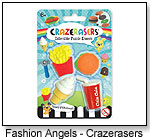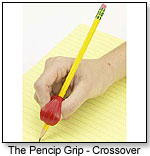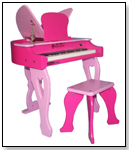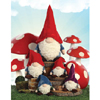|
|
Event Marketing Guru's Corner: Copywriting Skills for Success, Part I Don't Ignore the Audience or Change Too Much A fundamental skill for all businesses and organizations is to use language effectively in sales and marketing materials. The task of creating text for these materials is known as copywriting. The purpose of copywriting is to persuade the reader to act — to respond to an advertisement, to buy a product or service, to donate to a cause, to join an organization. Copywriting is part of direct mail marketing post cards, self-mailers and sales letters; display advertisements; brochures; press releases; white papers; catalogs; and all other marketing communications material. A fundamental skill for all businesses and organizations is to use language effectively in sales and marketing materials. The task of creating text for these materials is known as copywriting. The purpose of copywriting is to persuade the reader to act — to respond to an advertisement, to buy a product or service, to donate to a cause, to join an organization. Copywriting is part of direct mail marketing post cards, self-mailers and sales letters; display advertisements; brochures; press releases; white papers; catalogs; and all other marketing communications material.Copywriting differs from technical and business writing because it is persuasive rather than expository. Like technical or business writers, copywriters may present information, but their primary goal is to influence readers’ behavior. Copywriting can also violate the rules for standard business writing to achieve a desired effect or make the writing more interesting. MISTAKES TO AVOID  Copywriting combines the skills of writer and salesman. The writer pays attention to the nuances of language and word choice while the salesman strives to get the reader’s attention, create interest, provoke desire, and compel action. A copywriter must know how the copy will be used, the message to be delivered, and the audience. Not understanding these things leads to four common copywriting mistakes: Copywriting combines the skills of writer and salesman. The writer pays attention to the nuances of language and word choice while the salesman strives to get the reader’s attention, create interest, provoke desire, and compel action. A copywriter must know how the copy will be used, the message to be delivered, and the audience. Not understanding these things leads to four common copywriting mistakes:1. Ignoring the audience. The purpose of copywriting is to influence behavior, and a strong motivator is a perceived benefit. Copy that concentrates on the characteristics of the business or organization (the number of employees, years in business or at a location, mission statement) or makes vague, unsupported claims (great customer service, high-quality product) is ignoring the reader. Answer the question, “What’s in it for me?” and you’ll be focused on the audience. 2. Losing focus. The more features and benefits you include in the copy, the more likely readers are to become confused. Focus the message on a single topic, and, if needed, create a series of messages.  3. Changing copy too often. 3. Changing copy too often.This mistake is especially prevalent in direct mail marketing campaigns. A consistent message consistently delivered yields better results than a series of changing messages. Resist advice to refresh the copy. If something is working, keep using it. 4. Attracting attention rather than business. Good copywriting must attract attention, but it also must develop the reader’s interest in order to proceed to a sale. A message that is attention-getting but does not create desire and provoke action is useless. When reading advertising material, some people like to scan the headlines and bullet points and essentially ignore the text. Others read every word of copy so they will be fully informed. Still others scan headlines and bullet points looking for something of interest, then read carefully. Effective copywriting has to address all three reading styles. Readers who study the entire advertisement need details about the product or service — FAQs (frequently-asked questions), specifications and pricing, if applicable. Including a reader-involvement device such as a quiz or brief survey is also an effective attention-grabber. See tips on copywriting for a brochure in the next installment of “Event Marketing Guru’s Corner.”  Writer's Bio: Charles W. Allen is an independent consultant for professional event marketing solutions and specializes in sales training, motivational speaking and maximizing sponsorship sales. He also serves as executive director of the International Economic Alliance, which originated at Harvard University. Read more articles by this author Writer's Bio: Charles W. Allen is an independent consultant for professional event marketing solutions and specializes in sales training, motivational speaking and maximizing sponsorship sales. He also serves as executive director of the International Economic Alliance, which originated at Harvard University. Read more articles by this author |
| ||||||||||||||||||||||||||||||||
Disclaimer Privacy Policy Career Opportunities
Use of this site constitutes acceptance of our Terms of Use.
© Copyright 2025 PlayZak®, a division of ToyDirectory.com®, Inc.



